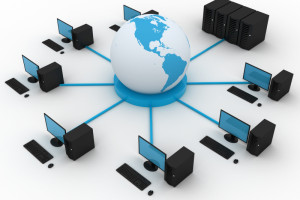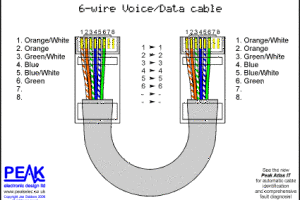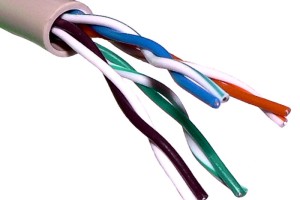Whether a company is designing a new network or upgrading their current system, there are several elements to consider in order to assure the best return on investment. Extra research in the beginning can translate to tremendous long-term savings, in terms of time and money. A well-designed network allows for cost-effective use of a company’s technology resources and flawless communication between users.
The first thing to assess is the overall cost of the network. It’s good to look at the project not only in straight purchase orders, but also in terms of total cost of ownership (TCO). In addition to the initial price of the necessary hardware and software, one should also consider the cost of installation, maintenance, and what will be required for future upgrades.
Once you take into consideration labor, site modification, potential building code and environmental fees, the cost of installing a complex cable plant can easily become the most expensive component of a large network. There are structured cabling professionals who can suggest an efficient physical layout and implement a color-coded system for cable runs. This will keep long-term costs to a minimum. They can also take into consideration future network expansions so you will have room to grow in the new space.
As networks become more complicated, they become more expensive to configure, monitor, and maintain. Support costs including training, hiring network managers and administrators, and dealing with power and bandwidth issues can quickly escalate, eating into company profits.
There are plenty of options to consider when deciding to expand or update your network. These opportunity costs also includes the cost of choosing NOT to upgrade or expand. However, the cost in terms of lost competitive advantage, reduced productivity, and diminished performance can also have a devastating impact on a business.
An external factor that can impact the overall cost of your network is the number of users. This is where the network effect comes into play, which is the premise that a network, especially a technology network, becomes more valuable to its users as more people use the network. However, there comes a point where an increased number of users will actually cause a network to become less effective and less valuable. A company must strive to find a good balance between network users and network capabilities.
When a company is looking to expand or upgrade their current network, they are considering the cost of performance trade-off. Simply put, “Is the increase in performance and network capabilities worth the expense to the business?”
Network performance is determined by examining a number of factors, including number of users, and speed, and is measured be examining bandwidth, throughput, latency, jitter, and error rate.
In January 2015, the FCC voted to change the definite of ‘high-speed Internet’ or ‘broadband’ from 4Mbps to 25Mbps, which means that anything less that 25Mbps is not actual broadband-level speed. The rise of streaming music and video means that networks require a lot more bandwidth than even five years ago and the FCC is working to increase minimum standards to 100Mbps
Bandwidth is the maximum rate that information can be transferred and is commonly measured in bits/second. Throughput is the actual rate that information is transferred and is determined by bandwidth, signal-to-noise ratio, and hardware limitations. Latency refers to the delay between the sender and the receiver and is mainly a function of a signal’s travel time. Jitter is the undesired deviation in time it takes for information to arrive at the receiver. And error rate is the number of corrupted bits expressed as a percentage of total bits of a data stream over a communication channel, either through wired or wireless networks.
When it comes to wired communications cables, the debate that continues to rage is ‘fiber or copper’? As bandwidth capabilities increase, both copper and fiber cable manufacturers are developing products that offer greater capacity and flexibility. Distance and speed are at the root of the discussion. Optical fiber tends to be safer, lighter, more scalable, and carries higher data bandwidth. Copper, on the other hand, is less expensive. Both are very reliable and reasonably durable. However, the optic fiber industry has been able to accommodate the increase in bandwidth very well, resulting in reduced costs.
Presently, there are two viable choices for Ethernet cable: Cat 5e and Cat 6. Cat 5e stands for Category 5 enhanced cabling and is made to support 1000 Mbps “gigabit” speeds. It also was designed to reduce the “crosstalk,” or interference that standard Cat 5 cables experienced. Cat 5e cables deliver fast, reliable speed.
On the other hand, Cat 6 cable is capable of 10-Gigabit speeds and offers extra interference improvements. This speed isn’t really necessary for most home networks, but small businesses may require this level of cable, depending on network requirements. This is especially true if you are transferring large files between computers. If you upgrade to Cat 6 cables, remember that you’ll also need to upgrade to a gigabit-capable router and gigabit-capable network to achieve these speeds. Remember to pay attention to installment costs when doing so.
By understanding these costs and performance-related elements, a company, small business, or even a technologically advance private residence can save time and money when deciding to install, upgrade, or expand a network.




